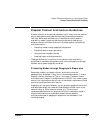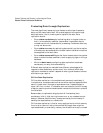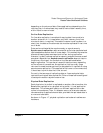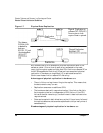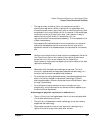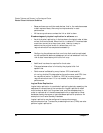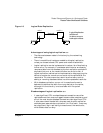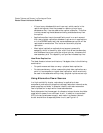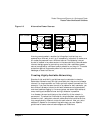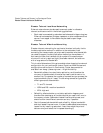
Disaster Tolerance and Recovery in a Serviceguard Cluster
Disaster Tolerant Architecture Guidelines
Chapter 1 39
depending on the volume of data. Some applications, depending on the
role they play in the business, may need to have a faster recovery time,
within hours or even minutes.
On-line Data Replication
On-line data replication is a method of copying data from one site to
another across a link. It is used when very short recovery time, from
minutes to hours, is required. To be able to recover use of a system in a
short time, the data at the alternate site must be replicated in real time
on all disks.
Data can be replicated either synchronously or asynchronously.
Synchronous replication requires one disk write to be completed and
replicated before another disk write can begin. This method improves the
chances of keeping data consistent and current during replication.
However, it greatly reduces replication capacity and performance, as well
as system response time. Asynchronous replication does not require
the primary site to wait for one disk write to be replicated before
beginning another. This can be an issue with data currency, depending
on the volume of transactions. An application that has a very large
volume of transactions can get hours or days behind in replication using
asynchronous replication. If the application fails over to the remote site,
it would start up with data that is not current.
Currently the two ways of replicating data on-line are physical data
replication and logical data replication. Either of these can be configured
to use synchronous or asynchronous writes.
Physical Data Replication
Each physical write to disk is replicated on another disk at another site.
Because the replication is a physical write to disk, it is not application
dependent. This allows each node to run different applications under
normal circumstances. Then, if a disaster occurs, an alternate node can
take ownership of applications and data, provided the replicated data is
current and consistent.
As shown in Figure 1-7, physical replication can be done in software or
hardware.









